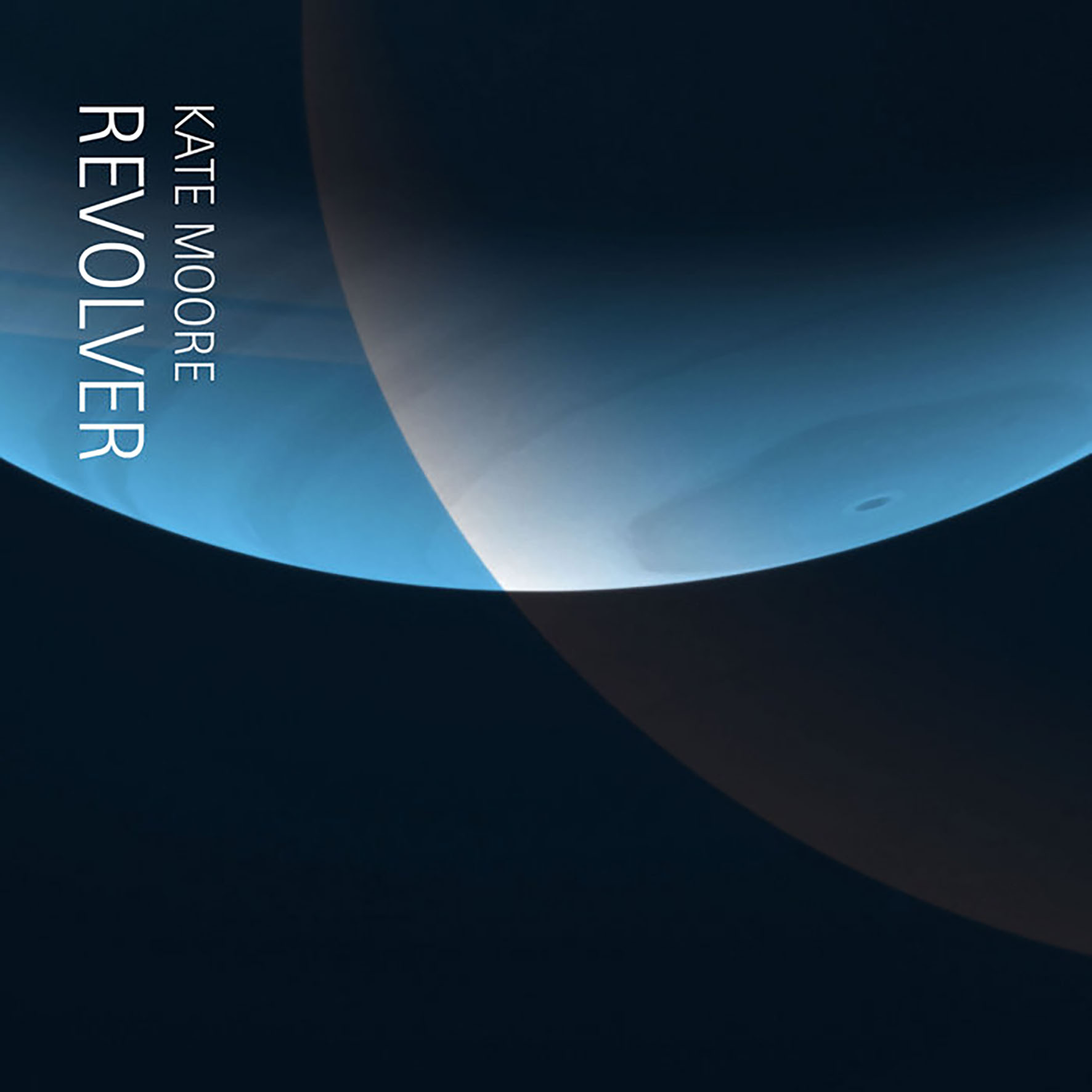
This is my first exposure to Netherlands-based composer Kate Moore, but I probably would have encountered her much sooner if I paid more attention to the modern classical music scene, as she released a well-regarded album of piano compositions on ECM back in 2014. Revolver is an entirely different animal though, as Moore composed for a small string ensemble augmented by a percussionist and a harpist. The album draws inspiration from the "kinetic physicality and aesthetics" of Australian artist Ken Unsworth, which Moore (a fellow Australian) attempted to translate into a "feeling of suspension between movement and stasis." The few Unsworth pieces that I have seen certainly share that feeling, but translating a vision of hanging rocks in an art gallery into eight strange and beautiful string pieces is not a simple and linear path, which is where the album title comes in: Moore attempted to recreate the same feeling of suspension through "evolving and revolving melodies, poised skilfully in polyrhythmic structures." To my ears, the result shares plenty of common ground with the repeating arpeggio patterns of modern classical minimalists like Reich and Glass, but enhanced with a considerably lighter touch, more human-scale intimacy, and a healthy appreciation for subtle psychedelia.
The title piece kicks off the album with quite an impressive statement of intent, as violinist Anna McMichael unleashes a sad and lovely melody over a repeating two-chord backdrop of xylophone and harp arpeggios. It is elegantly simple and uncluttered and occasionally feels like some kind of zen meditation on water and the transitory nature of all things, but it ultimately builds into a swirling and intense finale of ascending violin patterns that feels wonderfully out of phase with xylophone motif beneath. While my favorite pieces on the album all fall in a stellar four-song run on the second half, "Revolver" is an excellent piece that showcases Moore's distilled vision of strong melodies and shifting patterns beautifully. The second piece ("The Boxer") showcases further exquisite pleasure, as a mournful violin melody slices nicely through a gently hallucinatory backdrop of harp, xylophone, and a kick drum pulse that calls to mind an erratic, slowed-down heartbeat. I especially love how Moore balances the sharp physicality of the violin with soft-focus arpeggios that feel like harmonics that dreamily linger in the air.
That same feature is central to the "Song of Ropes" trilogy that is arguably the heart of the album, though "Song of Ropes II" is a churning and intense exception. On "Trio (Song of Ropes)" and "Song of Ropes I," however, Moore works wonders with slow, mournful cello motifs that leave ghostly tendrils of harmonics or spectral violin in their wake. Elsewhere, "Way of the Dead" unleashes an anguished-sounding violin melody over another heartbeat-like pulse, but unexpectedly blossoms into hypnagogically tropical-sounding second half. It calls to mind a possessed-sounding string ensemble performing in the surreal, half-remembered environs of a dimly lit Hawaiian-themed restaurant that I used to frequent in which the decor was all murals of moonlit palm-trees and glowing neon aquariums. The closing "Gatekeeper" is yet another divergent pleasure, as Genevieve Lang weaves a sad and lovely harp melody that has the feel of a tumbling, broken ghost waltz. It all adds up to quite a mesmerizing and inventive album, as Moore and her collaborators consistently transform strong melodies into something that feels wonderfully haunting and enchanted.
Samples can be found here.
Read More

